Why Home Care Workers?
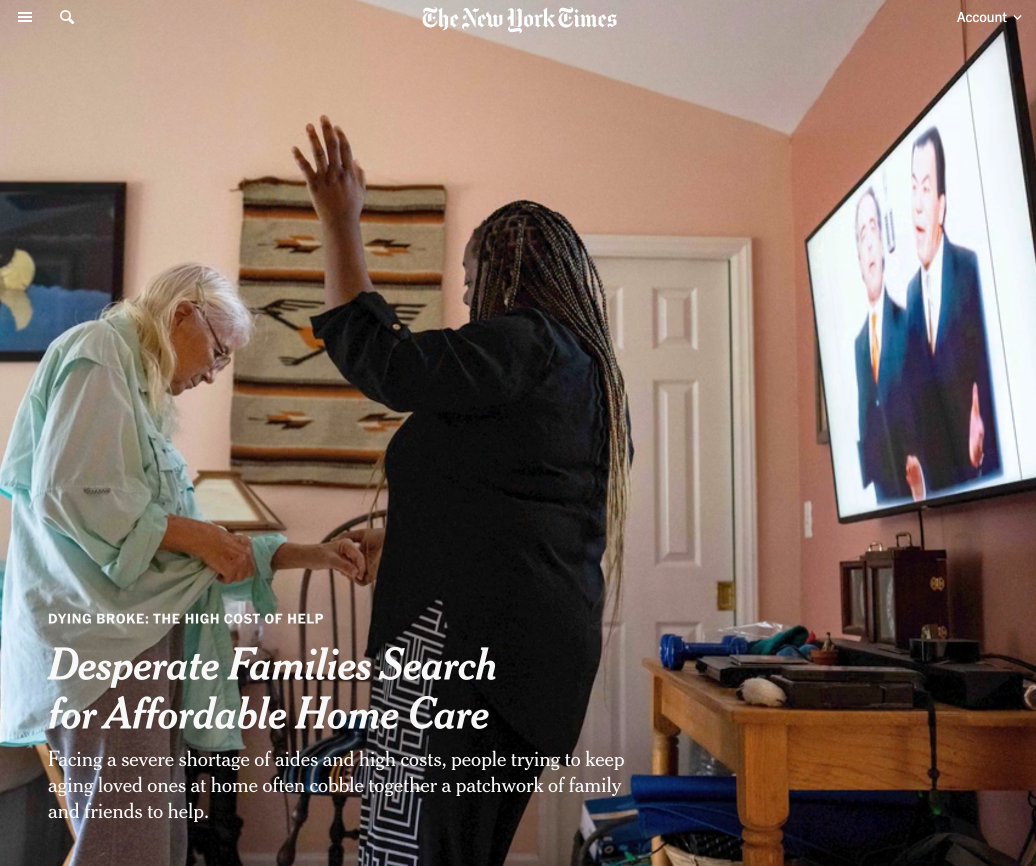

Home Care Workers (HCW) are an important group of frontline healthcare workers that deliver at-home care to older adults to enable them to age in place. Research has shown that HCWs, primarily consisting of Black and Latina women, are often overlooked and undervalued. They work in isolated conditions, are paid low wages and often experience stress and burnout.
With the aging population, the demand of home care workers is increasing. There is a pressing need to support these workers.
I'm advised by Dr. Nicola Dell and PhD Ian René Solano-Kamaiko, as part of the Initiative on Home Care Work at Cornell University.
With the aging population, the demand of home care workers is increasing. There is a pressing need to support these workers.
I'm advised by Dr. Nicola Dell and PhD Ian René Solano-Kamaiko, as part of the Initiative on Home Care Work at Cornell University.
Safe and Trustworthy AI

Second author for accepted paper at CHI 2025.
The ACM (Association of Computing Machinery) CHI conference on Human Factors in Computing Systems is the premier international conference of Human-Computer Interaction (HCI) and one of the top ranked conferences in computer science.
The ACM (Association of Computing Machinery) CHI conference on Human Factors in Computing Systems is the premier international conference of Human-Computer Interaction (HCI) and one of the top ranked conferences in computer science.
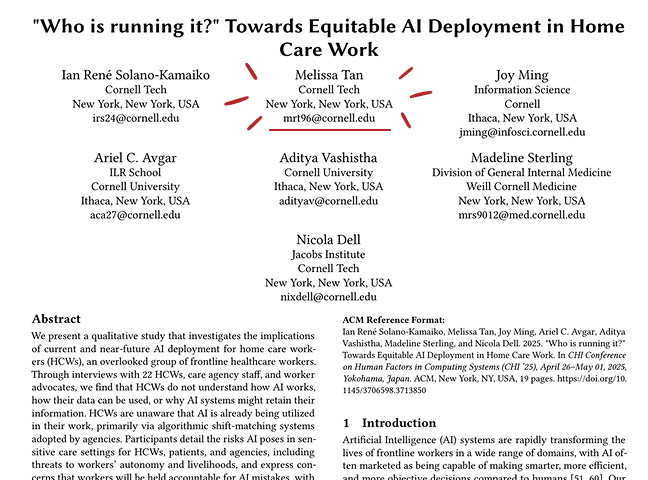
Qualitative Study on AI Deployment in Home Care Work (read here)
Summary
Expand for a pictorial overview of the AI study.
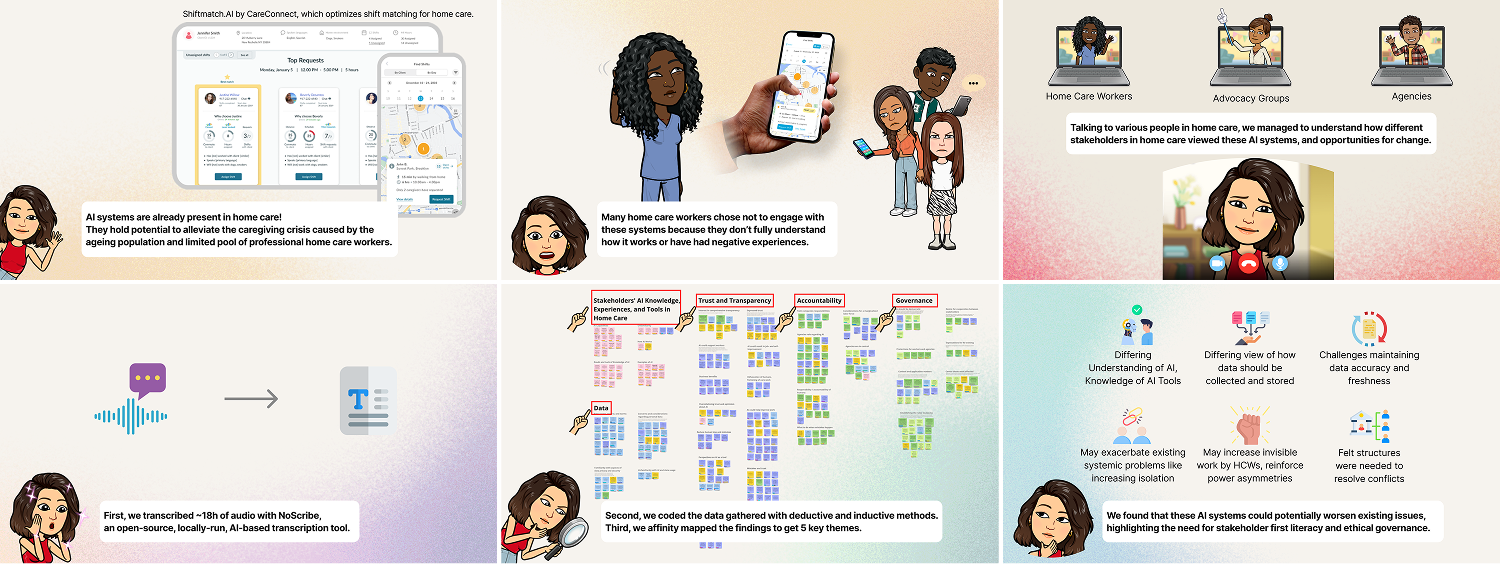
Story behind the AI work.
Problem
AI systems are rapidly transforming the lives of workers in a wide range of domains, healthcare included. With the rising demand for home care services following an ageing population, AI poses a potential to improve efficiency and reduce costs, helping to ameliorate the caregiving crisis.
Research Question:
What are home care workers, home care agencies, and unions' perceptions and understanding of AI use in the home-care industry?
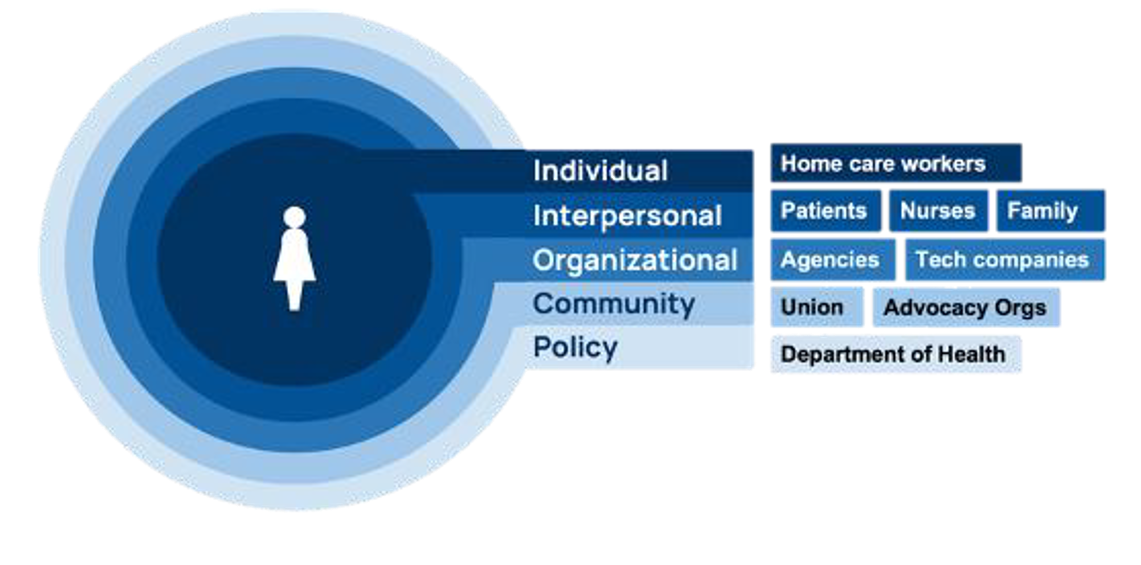
Conceptual Model based on the Social Ecological Model by Dr. Sterling (source)
To better understand the implications of current and near-future AI deployments in home care work, we conducted a qualitative study to understand how AI affects various stakeholders. Guided by the Social Ecological Model, we investigated the implications of AI in home care for workers, agencies, and advocacy groups.
Qualitative Study
We synthesized qualitative findings from 22 interviews via structural coding of high-level topics, inductive generation of sub-codes within categories, and finally affinity mapping to get key themes.

Remote Interview

Deductive and Inductive Coding Tree
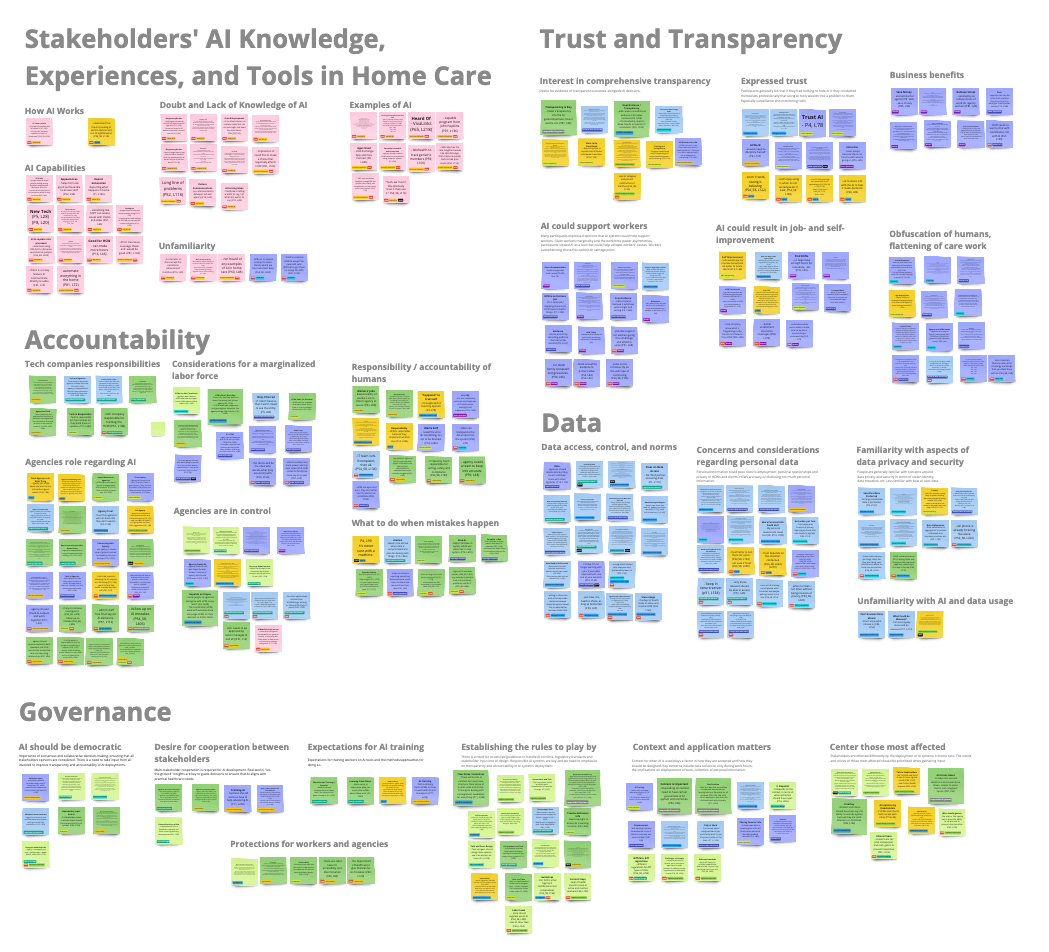
Affinity Mapped Themes
Findings
We found that HCWs do not understand how AI works, how their data can be used or why AI systems may retain their information. Considering risks that workers will be held responsible for AI mistakes, we first acknowledge the challenges to equitable AI development and deployment in home care work, and advocate for stakeholder-first literacy and education.
Next Steps
We are currently gathering perspectives from more stakeholder groups, namely technology companies and clinicians. We aim to publish our work in a peer-reviewed medical journal later this year.
Wearable Technology
Second author for accepted paper at CSCW 2025 (ACM SIGCHI conference on Computer-Supported Cooperative Work & Social Computing).
CSCW is the premier venue for research in the design and use of technologies that affect groups, organizations, communities, and networks. Bringing together top researchers and practitioners, CSCW explores the technical, social, material, and theoretical challenges of designing technology to support collaborative work and life activities.
CSCW is the premier venue for research in the design and use of technologies that affect groups, organizations, communities, and networks. Bringing together top researchers and practitioners, CSCW explores the technical, social, material, and theoretical challenges of designing technology to support collaborative work and life activities.
Summary
Expand for a pictorial overview of the Wearable Tech study.
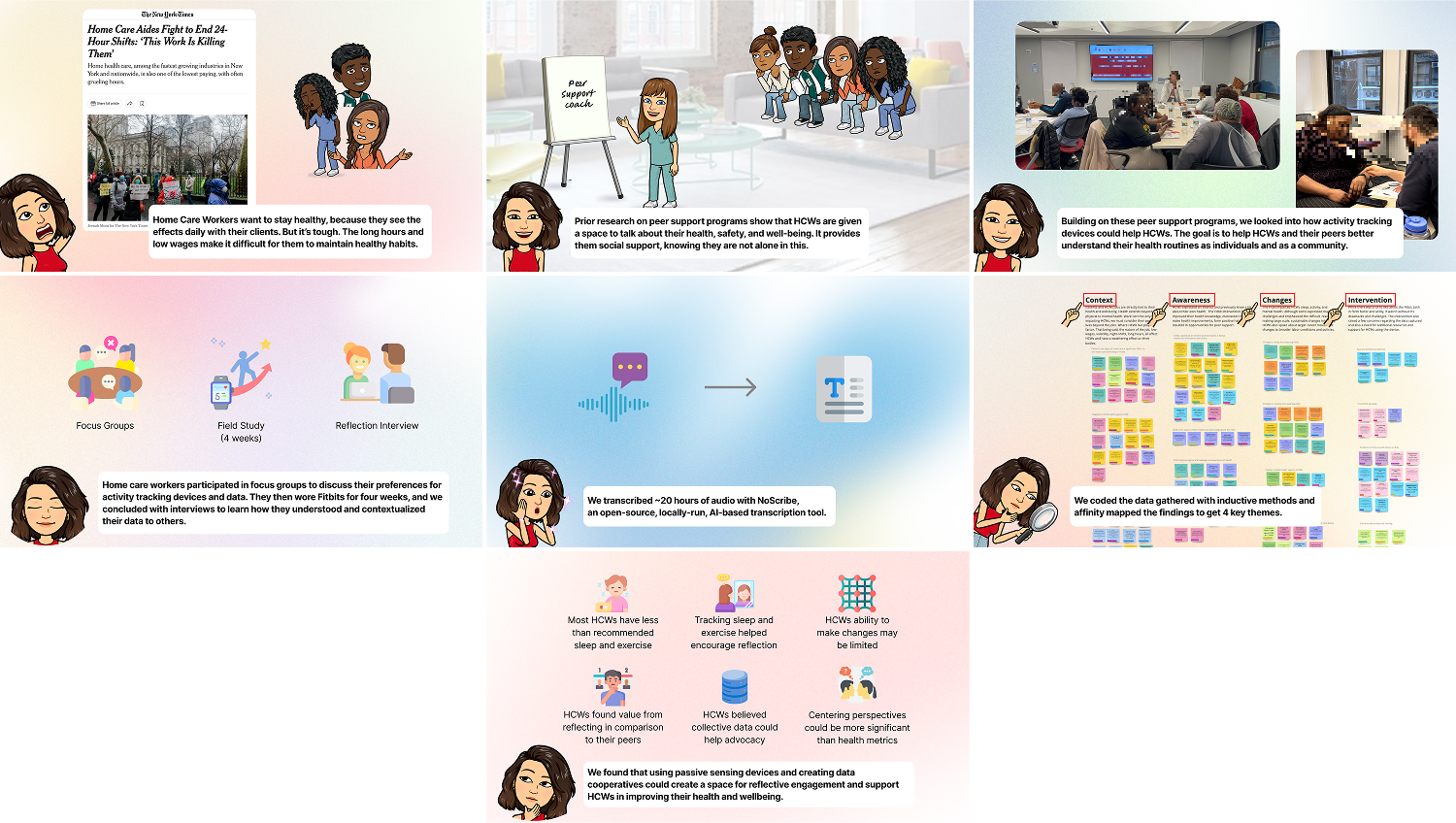
Story behind the wearables work.
Problem
Despite the challenges HCW face at work, research suggests they are motivated to be healthy, driven by their desire to care for others and their work with sick patients.
Research Questions:
- Do HCWs think tracking their health and wellbeing would be useful?
- Would HCWs’ be willing to track and share their data with others?
- What kinds of tracking devices might be appropriate for home care contexts?
We investigated the feasibility and utility of using activity tracking devices to provide HCWs with fine-grained awareness and insight into their daily activities that affect their health and wellbeing.

Study Process


Visualization of HCWs Realizations on Their Work-Life Balance.
Mixed Method Study
We conducted mixed method research including in-person focus groups, interviews (remote and in-person), and a four-week field study with 17 participants, investigating feasibility and acceptability of deploying personal devices with home care workers to increase awareness and well-being.

Focus Group
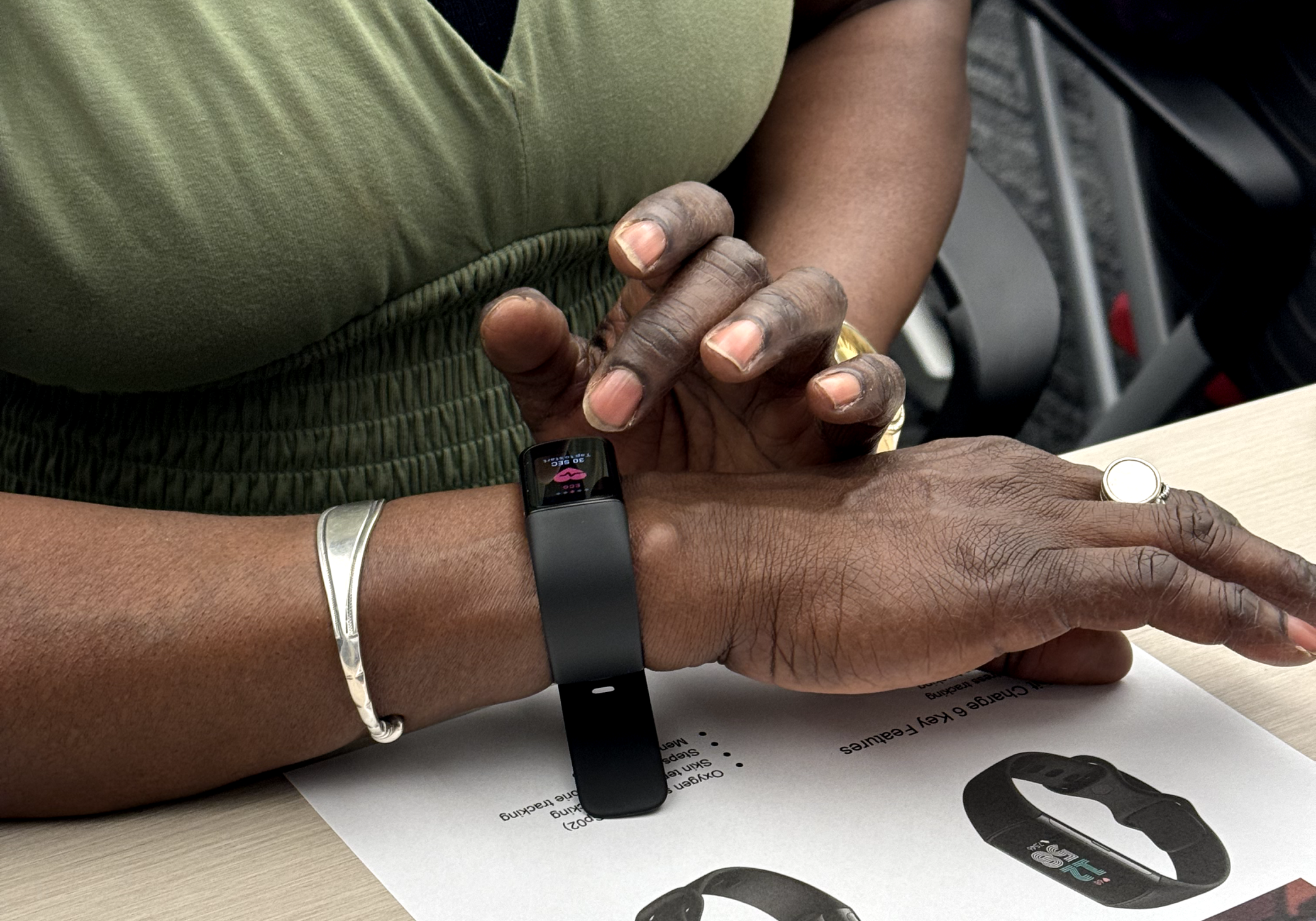
Participant Trying the Watch-based Wearable Device
Findings
We found that HCWs often feel that they need to choose between sleep, work, and exercise. Approaches that center HCWs' perspectives and experiences worked better than simply showing health metrics. Referencing collective data helped them contextualize their experiences while fostering togetherness and solidarity. Future work could explore data cooperatives and peer support programs that support HCW advocacy via data sharing.

